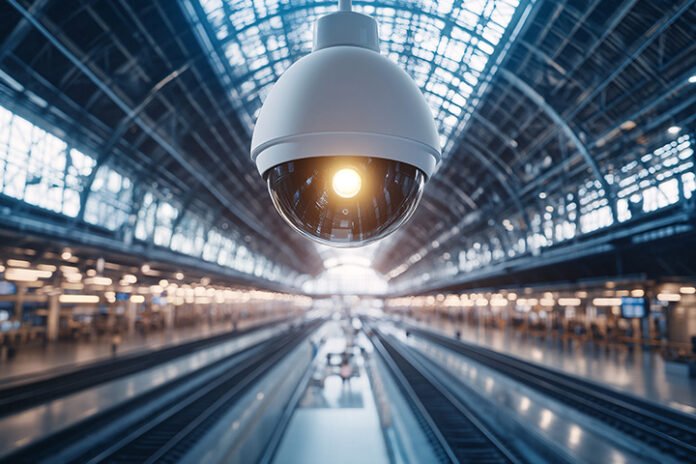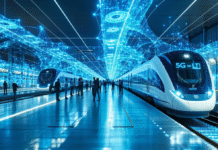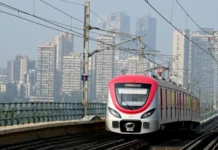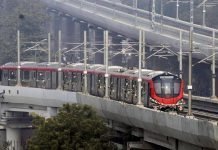Introduction
Over the past decade, metro and railway networks have expanded rapidly to meet the growing demand for urban mobility, particularly in countries like India. As cities continue to grow and passenger volumes increase, these transportation systems have become increasingly complex and vulnerable to security risks.
This expansion has underscored the need for the urgent implementation of advanced surveillance solutions to ensure passenger safety and protect critical infrastructure. Traditional security methods are no longer sufficient to handle the scale of modern rail operations. In response to these challenges, technologies such as Artificial Intelligence (AI) and the Internet of Things (IoT) are being integrated into the rail network.
These intelligent systems not only enhance security and operational efficiency but also contribute to the development of smarter and more responsive public transportation networks.
Why are Advanced Security Systems Essential in Rail Networks?
The metro and railway network serve millions of passengers daily, but the growing volume of commuters also elevates security challenges. Conventional surveillance systems are primarily dependent on CCTV cameras and human monitoring, which struggle to meet the demands of these vast and complex environments.
To overcome these limitations, the integration of Artificial Intelligence (AI) presents a transformative solution that enables real-time monitoring, intelligent threat detection, and more proactive security management across the rail network.
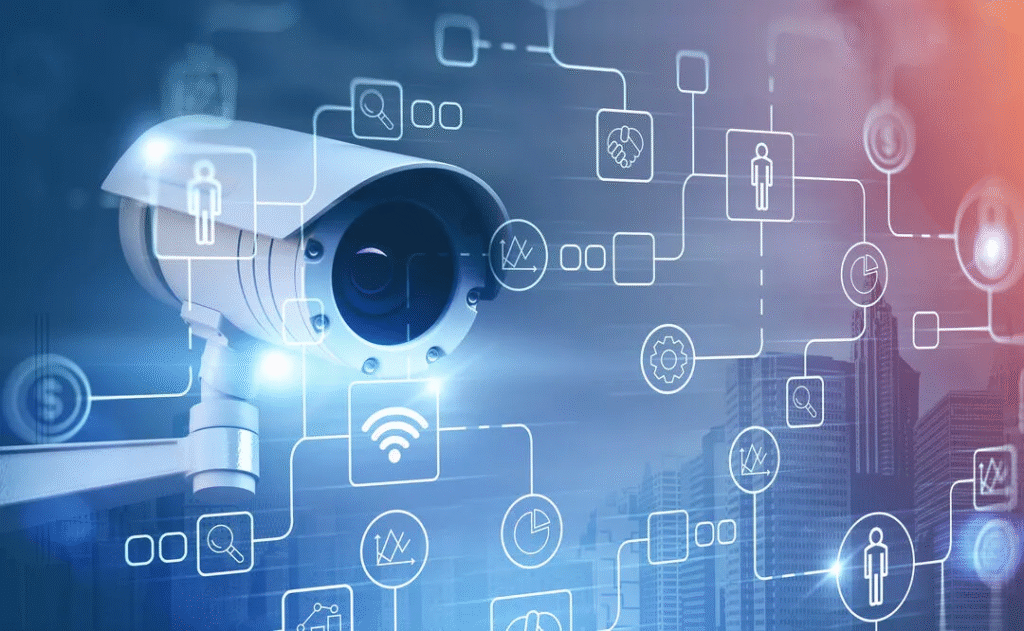
Existing Security Challenges in Rail Networks
The metro and railway network play a vital role in rail transportation, but they also face increasing safety and operational challenges. These vulnerabilities emphasise the urgent need for modern, AI-driven surveillance systems that can provide more effective and scalable security solutions.
- High Passenger Density: High passenger density in metro and railway stations is a persistent challenge, especially during peak hours, festivals, public events, or emergencies, when the sudden influx of commuters often overwhelms infrastructure. Such overcrowding not only causes operational delays but also increases safety risks, including stampedes, crowd crushes, and medical emergencies.
- The tragic overcrowding incident at New Delhi Railway Station in February 2025, which claimed 18 lives, highlighted the devastating consequences of unregulated passenger surges and inadequate crowd management.
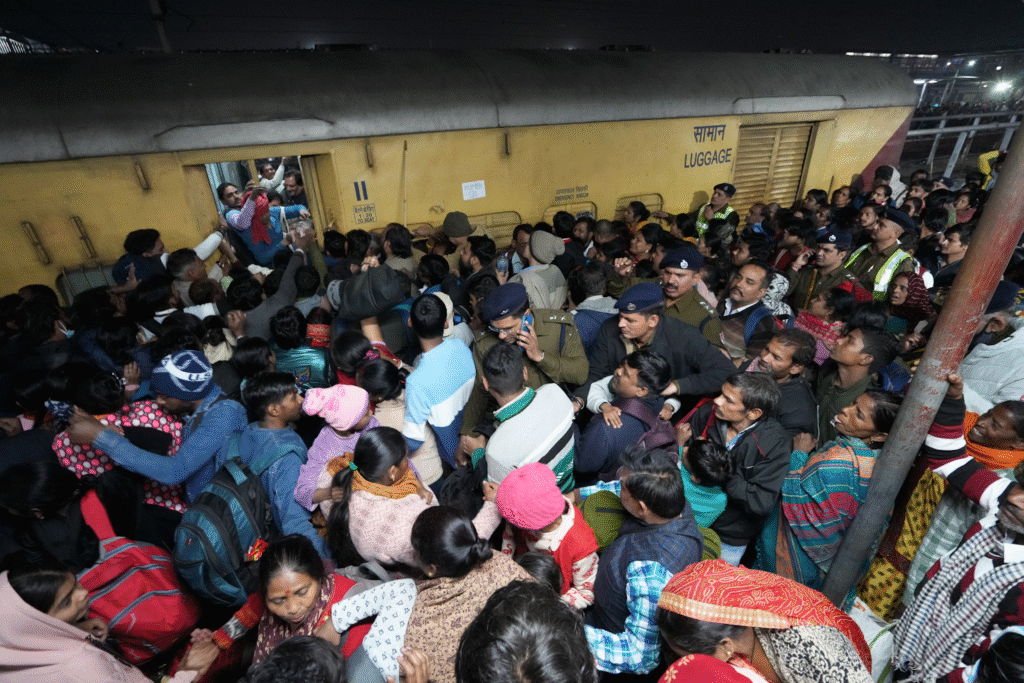
- Infrastructure Vulnerabilities: Metro and railway systems rely on a range of critical infrastructure, such as platforms, tracks, tunnels, elevators, escalators, and signaling equipment. These components have the potential to pose serious risks due to mechanical failures, aging infrastructure, and human errors. Such incidents can lead to service disruptions, operational breakdowns, and threats to passenger safety.
- For example, in May 2024, during regular operations at Delhi Metro’s Kashmere Gate station, a technical glitch caused an escalator to suddenly reverse direction, which led to chaos and resulted in injuries to multiple passengers. The incident outlines the urgent need for proactive monitoring and timely intervention to prevent such failures.
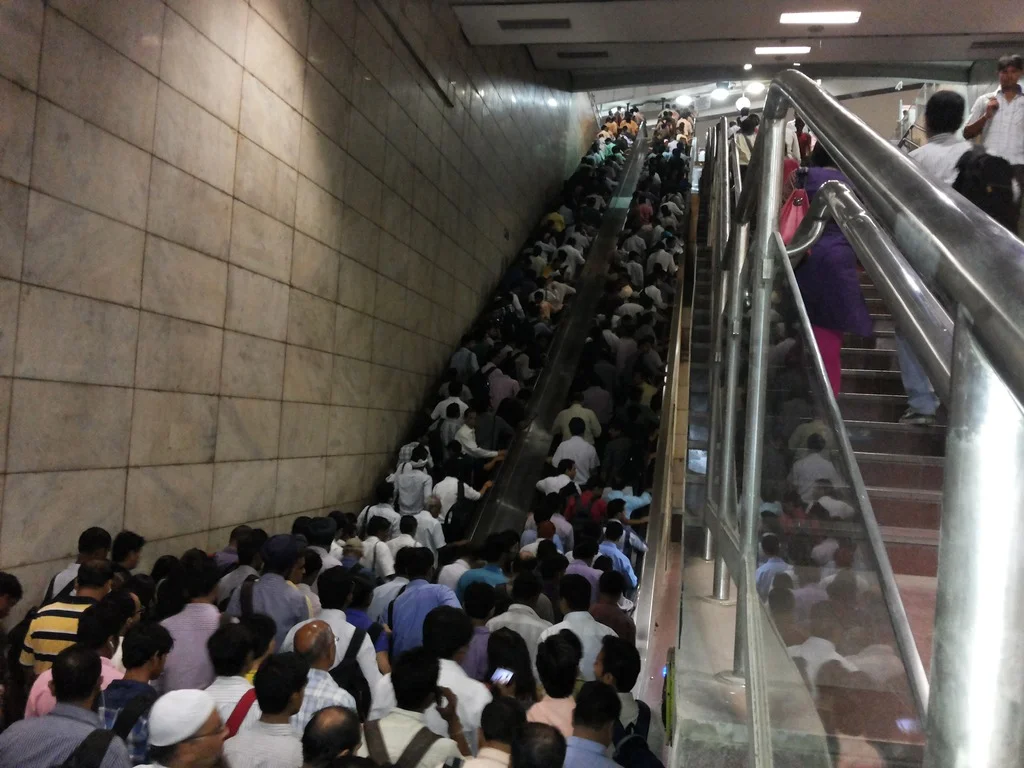
- Crime and Security Threats: Metro and urban rail networks are increasingly vulnerable to crime and security threats such as theft, harassment, vandalism, and even acts of terrorism. High passenger density, complex station layouts often make it difficult for security personnel to monitor all areas effectively.
Hence, the traditional surveillance methods fall short during these situations, making it hard for security personnel to detect incidents in time. AI-powered surveillance systems offer a practical solution by providing real-time crowd monitoring, automated alerts, and early detection of dangerous conditions, which enables more effective crowd control and improved passenger safety.
What Is an AI-Powered Surveillance System?
AI-powered surveillance leverages advanced artificial intelligence technologies to automate the monitoring, interpretation, and response to data collected through video feeds, sensors, and other surveillance tools. It enhances traditional security systems by enabling faster decision-making, proactive threat detection, and smarter incident management.
Key Features of AI-Powered Surveillance:
- Computer Vision: Computer vision enables AI systems to interpret and analyse visual content, such as images and videos, in real-time. This capability allows for the automated detection of suspicious activity, object recognition, and the monitoring of crowd behaviour with minimal human intervention.
- Machine Learning: Machine learning enables AI-powered surveillance systems in rail networks to detect hidden patterns in video and sensor data. By learning from past incidents, it can predict unusual behaviour or security threats without requiring explicit programming.
- Behavioral Analytics: AI analyses behaviour in real time to detect anomalies. It can identify irregular movements, unauthorized access, and sudden crowd surges which allows early intervention before situations escalate.
- Automatic Number Plate Recognition (ANPR): This feature enables the system to capture and process vehicle number plates for identification and tracking. It is particularly useful for monitoring entry and exit points, enforcing restricted access, and supporting incident investigations.
Real-World Implementations of AI-Powered Surveillance in Rail Networks
- India – Bangalore Metro Rail Corporation (BMRCL)
- In May 2025, Bangalore Metro Rail Corporation Limited (BMRCL) announced the deployment of an advanced AI-powered CCTV surveillance system at six metro stations between Byappanahalli and MG Road of the Purple Line. The key feature of the deployment is the incorporation of Automatic Number Plate Recognition (ANPR) technology, which captures and analyses vehicle number plates in front of metro stations.

- India – Delhi Metro Rail Corporation (DMRC)
- The Delhi Metro Rail Corporation (DMRC) is planning to deploy an advanced AI-powered CCTV surveillance system to enhance safety and streamline operations under Phase IV of the Delhi Metro Rail Project.
- Additionally, DMRC is also planning to install smart cameras with facial recognition at seven stations of the Airport Express Line. DMRC principal executive director, corporate communications, Anuj Daya, mentioned, “A tender has been floated for the design, supply, and commissioning of such cameras at the entry/exit points of the identified stations.”

- Indian Railways
- The Railway Board plans to install AI-powered CCTV Cameras on every locomotive and at key yards to address the rising number of rail accidents across the country.
- In a press briefing at Prayagraj Railway Junction, Railway Board Chairperson and CEO Jaya Verma Sinha said, “We are installing CCTV cameras with AI technology on every locomotive and at all significant yards,”.
- Hong Kong- Mass Transit Railway System ( MRTS)
- Hong Kong’s Mass Transit Railway, or MTR, uses AI to forecast congestion levels and move more trains proactively into that area. AI algorithms analyze live data from cameras and sensors to forecast crowd density and prevent platform overcrowding by automatically adjusting train frequency.
Benefits of AI-Powered Surveillance in Rail Networks
Enhanced Passenger Safety
AI-driven surveillance systems enable real-time monitoring of passengers’ activity, ensuring rapid detection of potential threats. Integrated tools like facial recognition and ANPR empowers security personnel to respond rapidly, which reduces the risk of crime, harassment or terrorism.
Improved Emergency Management
The AI-powered surveillance systems delivers real-time location tracking and updates during the situations like stampedes, medical emergencies and crowd surges.This facilitates quicker decision-making and enables dynamic crowd redirection during emergencies.
Reduced Human Error
AI surveillance provides continuous 24/7 monitoring with high accuracy. It detects potential threats early, which reduces the risk of errors and supports seamless operation.
Data-Driven Insights for Future Planning
AI collects and analyses massive volumes of data on passenger behaviour, peak hours, and traffic patterns. These insights help rail authorities design better station layouts, improve scheduling, and anticipate future infrastructure needs.
Challenges in Deploying AI-Powered Surveillance
High Initial Cost
One of the major challenges in implementing an AI-powered surveillance system in rail networks is the high initial investment. The costs include purchasing advanced surveillance equipment, upgrading infrastructure, and integrating AI software. These requirements make it difficult to deploy AI-powered surveillance systems on a large scale.
Data Management Complexity:
AI surveillance systems generate vast amounts of video footage and sensor data. Handling this data in real time requires strong infrastructure and cybersecurity, making data management a crucial challenge in the implementation of an AI-powered surveillance system.
Integration with Existing Infrastructure
Many railway systems operate with outdated control rooms and analog surveillance networks. Integrating AI technologies into such legacy setups requires extensive upgrades or replacement, which is technically complex and financially draining. These challenges often slow down the implementation of AI surveillance systems and reduce the overall efficiency.
Cybersecurity Threat
AI-powered surveillance systems are vulnerable to hacking, data breaches, and system manipulation. A compromised surveillance system could expose sensitive data or disrupt security responses, making cybersecurity a top priority and ongoing challenge in deployment and operation.
Conclusion
The adoption of an AI-powered surveillance system represents a pivotal advancement in strengthening rail network security and operational resilience. As urban centres continue to grow and passenger volumes surge, conventional surveillance methods struggle to meet the demands of today’s complex transit systems. AI technologies offer a smarter, more responsive alternative that enables real-time monitoring, early threat detection, and faster emergency intervention. These systems not only improve passenger safety but also support predictive maintenance and data-driven decision-making for long-term planning. The Bangalore Metro’s deployment of AI-driven CCTV Cameras illustrates how Indian rail networks are beginning to embrace this shift. However, challenges such as high initial investment, cybersecurity concerns, and integration with outdated infrastructure remain key barriers. Despite these obstacles, the long-term advantages, ranging from reduced human error and data-driven insights for future Planning, highlight the AI’s potential to revolutionise public transport and build safer, smarter rail systems for the future.


